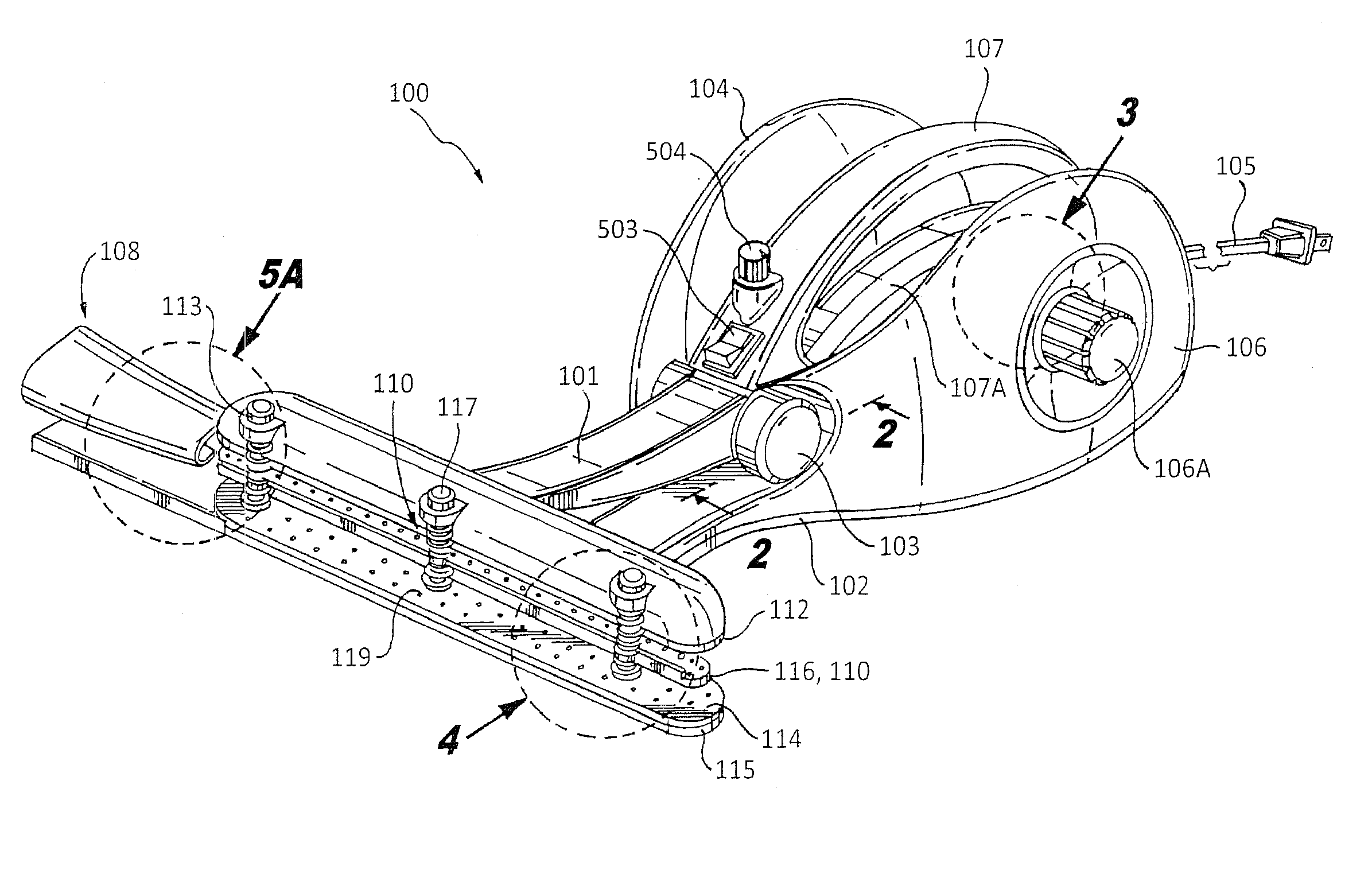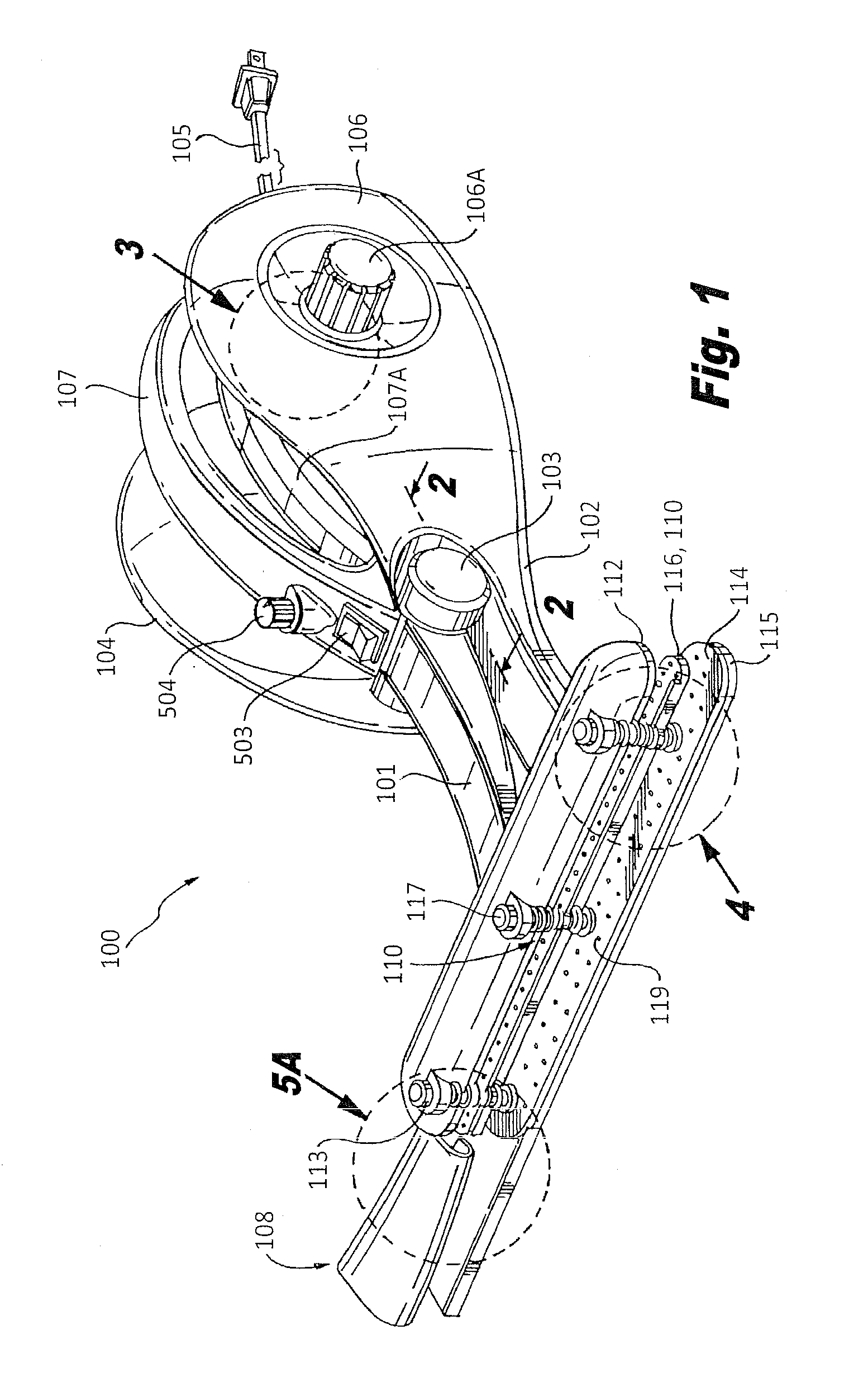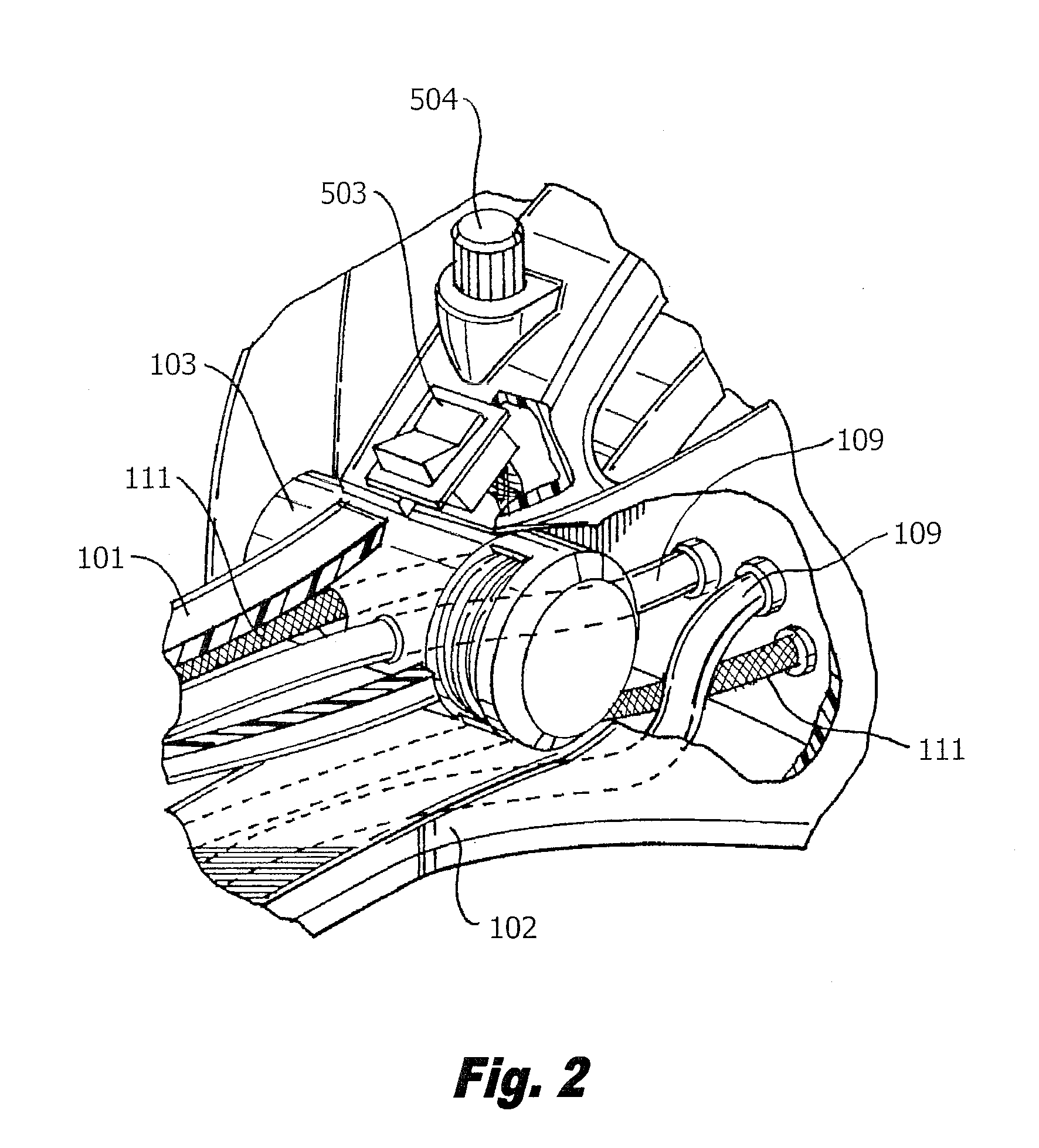System and apparatus for creating a hem
a technology of a consumer device and a hem is applied in the field of consumer devices for forming a double rolled hem, which can solve the problems of large lime consumption, difficult-to-conduct tasks without the requisite hand skill, and inconvenience, and achieve the effect of preparing for alternative constructions
- Summary
- Abstract
- Description
- Claims
- Application Information
AI Technical Summary
Benefits of technology
Problems solved by technology
Method used
Image
Examples
Embodiment Construction
[0070]Reference will now be made in detail to at least one embodiment of the invention that is illustrated in the accompanying drawing. The same or similar reference numerals are used throughout the drawing and the description to refer to the same or like parts or steps. The drawing is in a simplified form and is not to a precise scale or shape. For purposes of convenience and clarity only, directional terms, such as top, bottom, up, down, over, above, and below may be used with respect to the drawings. These and similar directional terms should not be construed to limit the scope of the invention in any manner. Furthermore, the words “connect,”“couple,” and similar terms with their inflectional morphemes do not necessarily denote direct and immediate connections, but also include connections through mediate elements or devices.
[0071]As used herein the phrases woven, non-woven, textile, cloth, fabric, sheet goods, film, dress goods, piece goods, flexible members, and clothing will b...
PUM
 Login to View More
Login to View More Abstract
Description
Claims
Application Information
 Login to View More
Login to View More - R&D
- Intellectual Property
- Life Sciences
- Materials
- Tech Scout
- Unparalleled Data Quality
- Higher Quality Content
- 60% Fewer Hallucinations
Browse by: Latest US Patents, China's latest patents, Technical Efficacy Thesaurus, Application Domain, Technology Topic, Popular Technical Reports.
© 2025 PatSnap. All rights reserved.Legal|Privacy policy|Modern Slavery Act Transparency Statement|Sitemap|About US| Contact US: help@patsnap.com



